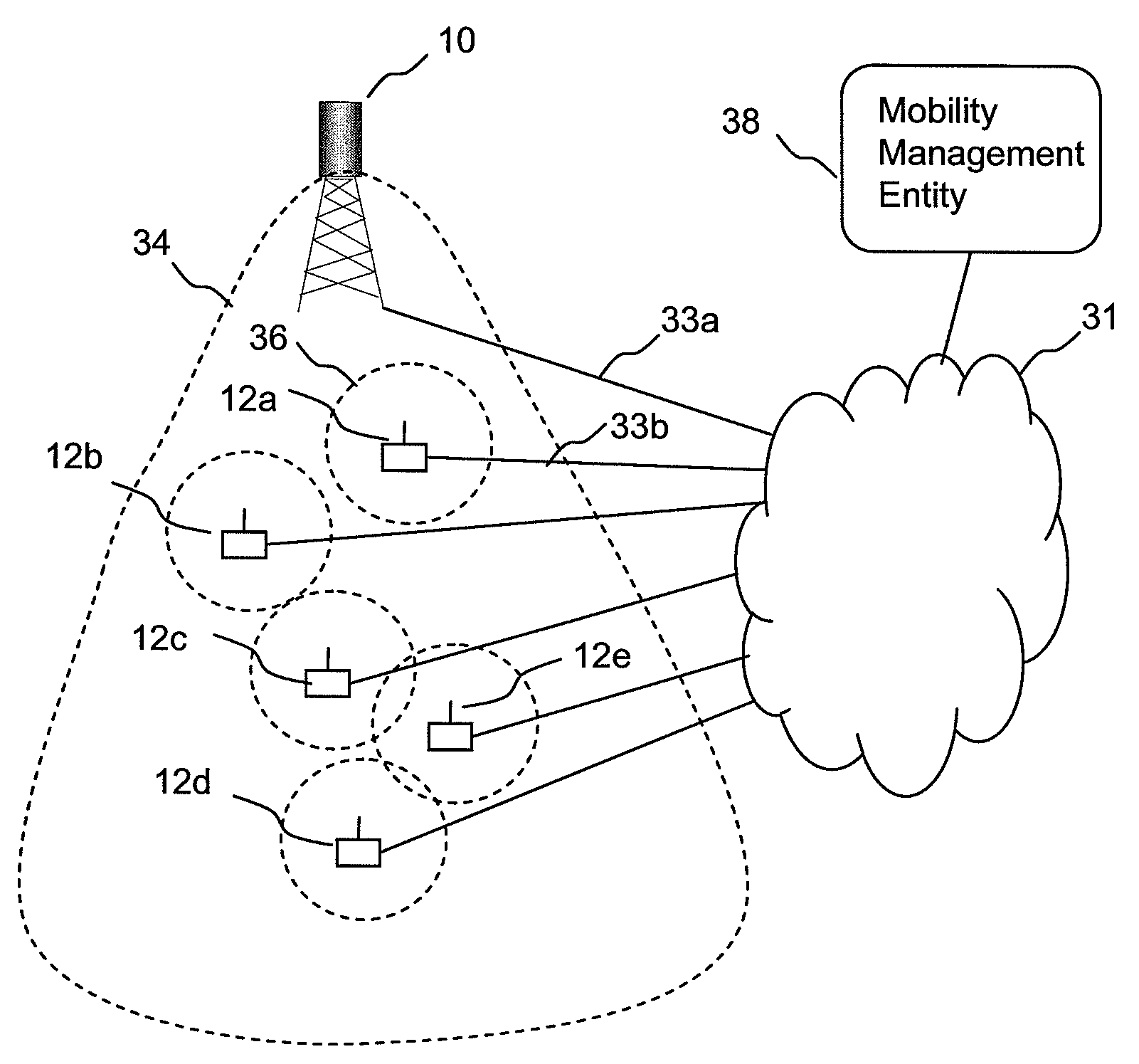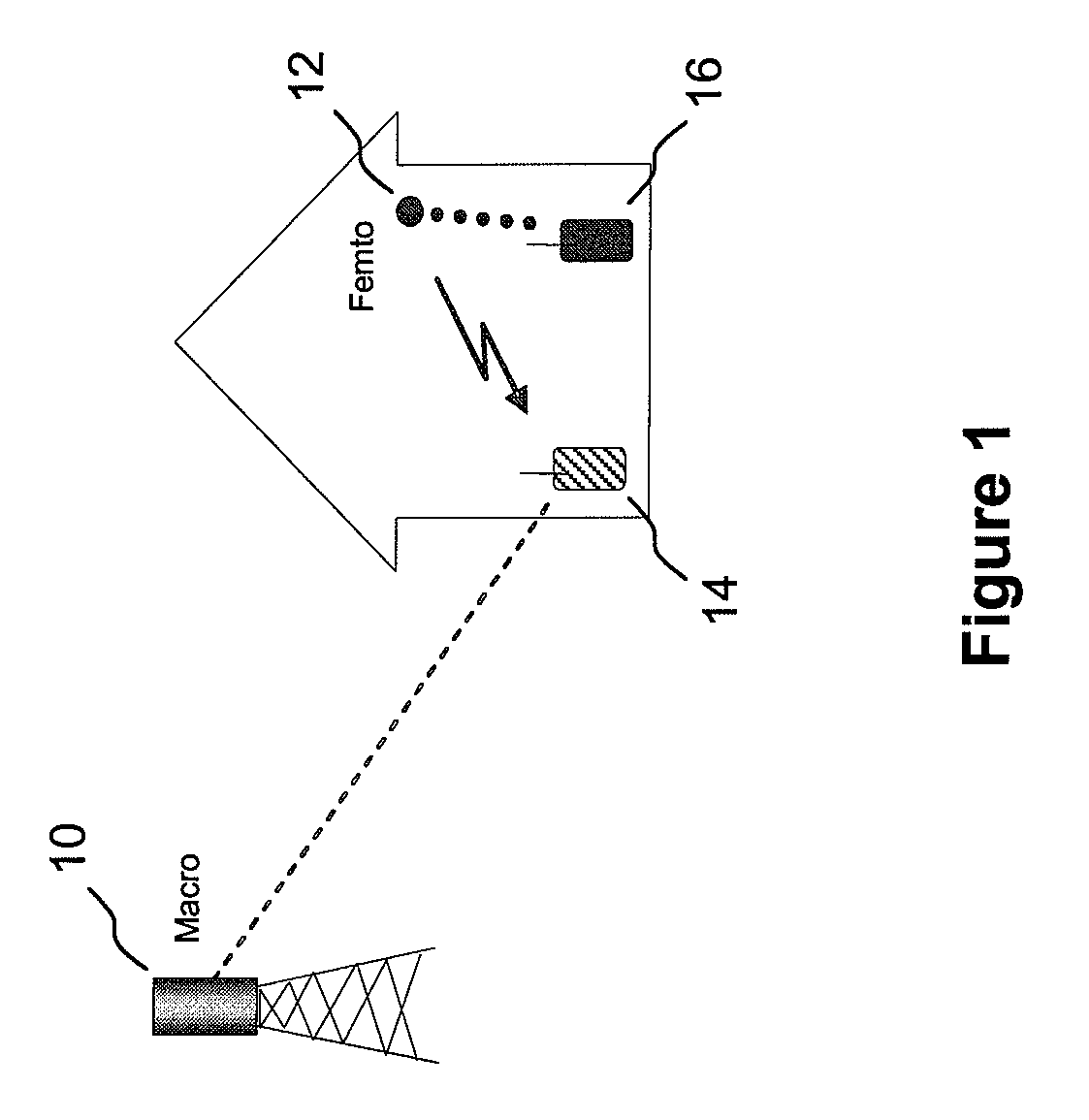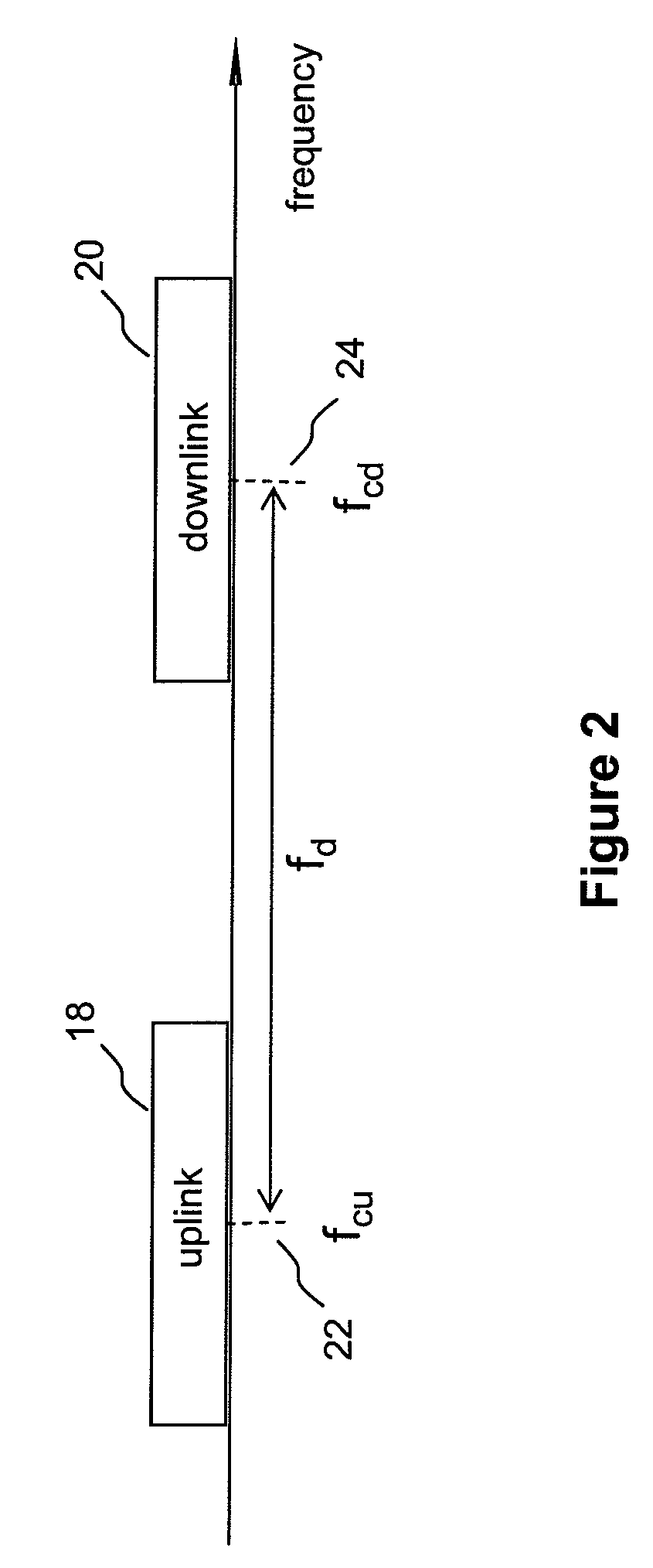Radio Resource Allocation for Cellular Wireless Networks
a radio resource allocation and wireless network technology, applied in the field of cellular wireless data communication networks, to achieve the effect of facilitating data transmission, simplifying design, and strong signal
- Summary
- Abstract
- Description
- Claims
- Application Information
AI Technical Summary
Benefits of technology
Problems solved by technology
Method used
Image
Examples
Embodiment Construction
[0030]A first embodiment of the invention will be described in the context of a cellular wireless communication network comprising macrocell and femtocell base stations, with particular reference to the frequency division duplexed systems. However, it will be understood that this example is for illustration purposes and that the invention can be applied to radio communications generally and to systems complying with other wireless standards. For example, the invention is applicable to radio access systems generally and is applicable to time division duplex systems in addition to frequency division duplexed systems.
[0031]FIG. 2 illustrates the frequency plan for a conventional frequency division duplex radio communication system, such as the Third Generation Partnership Project Long Term Evolution System, know as LTE. It can be seen that a block of frequencies 18 with a centre frequency fcu 22 is allocated for use in the uplink, that is the path from a user equipment to a base statio...
PUM
 Login to View More
Login to View More Abstract
Description
Claims
Application Information
 Login to View More
Login to View More - R&D
- Intellectual Property
- Life Sciences
- Materials
- Tech Scout
- Unparalleled Data Quality
- Higher Quality Content
- 60% Fewer Hallucinations
Browse by: Latest US Patents, China's latest patents, Technical Efficacy Thesaurus, Application Domain, Technology Topic, Popular Technical Reports.
© 2025 PatSnap. All rights reserved.Legal|Privacy policy|Modern Slavery Act Transparency Statement|Sitemap|About US| Contact US: help@patsnap.com



